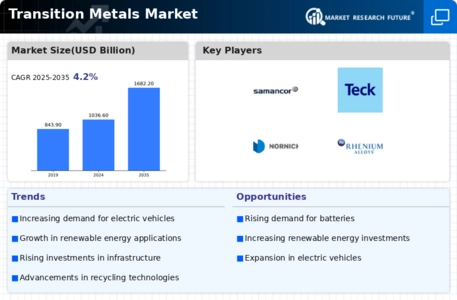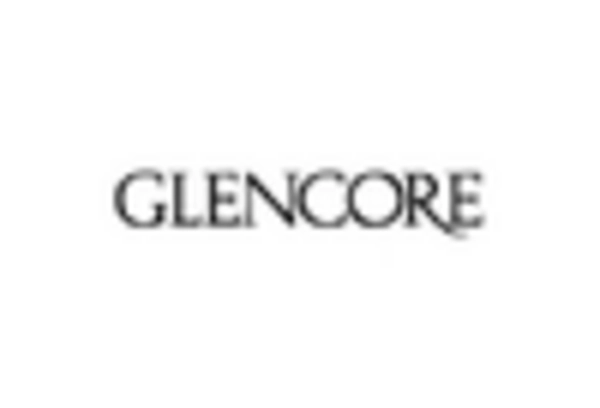Market Share
Transition Metals Market Share Analysis
Transition Metal Market, a strategic sector of the global economy, uses several different market positioning techniques to be ahead of competition and give its business a leverage in a competitive and constantly changing business environment. The focus can be on differentiation. Differentiation is the approach where companies try to identify what differentiates their products from those of competitors and aim to develop superior quality, special features or better technology in order to be able to do that. It is built on the concept of the particular product as a market leader in its branch provides the stability for the company to charge higher prices and drive a steady customer demand. This can be illustrated through the demonstration of the high purity levels of the metals from transition available in its products, or through the showcasing of novel extraction techniques that differ from competitors.
One of the other strategic drive approaches is cost leadership where the companies aim at effectively operating the machinery to produce the element cheaper as compared to their competitors. One of such ways is through the realization of economies of scale through which these companies offer competitive costs, attract price-sensitive customers and this possibly leads to surge in larger market share. This strategy is centered on the need of having a well-thought-out production process, supply chain oversight and a positive relationship with the resources which helps maintain a quality assured cost advantage.
Similarly, a consumer behaviors and market segmentation are highly significant for the Transition Metals Market. Companies generally do this market segmentation into purely different sectors with the help of the factors such as industrial applications, geographic regions, or specific material properties. Through producing specialized goods and pinpointing a specific market segment, companies can not only effectively fend off their competitors but also expand their own market shares. Consider, for instance, the case of a business that manufactures only transition metallic powders for the electronics industry, knowing precisely what is needed in this niche area and increasing its chances of getting ahead.
Other sources for championing a specific market position include strategic alliances and partnerships. Due to the partnerships that are made with suppliers, research organisations, or other players in the sector, with one another you can acquire new technological developments and resources, as well enter new markets. Through the process of creating these formal and informal collaborations companies involved in Transition Metals Market are able to solidify their competitive advantage, cultivate innovation, and stimulate the expansion of the whole sector. One of the major activities in the joint ventures or partnerships in research and manufacturing lead to the development of a new product which is the unique competency of included companies for the technological advancement.
As well, from a point of view of customer-focus, such an approach is especially crucial for market positions of Transition Metals market. Identifying and following the customer needs, preferences, and feedback supply companies with the understanding that to allow customization of the products and services to the customers. This customer-centric approach helps the brand “lock in” existing customers (thus creating loyal following) and brings in (through word of mouth) the new customers as well. Creative customer service, fast delivery, and customized solution units can significantly enhance a company as a product of markets.

















Leave a Comment